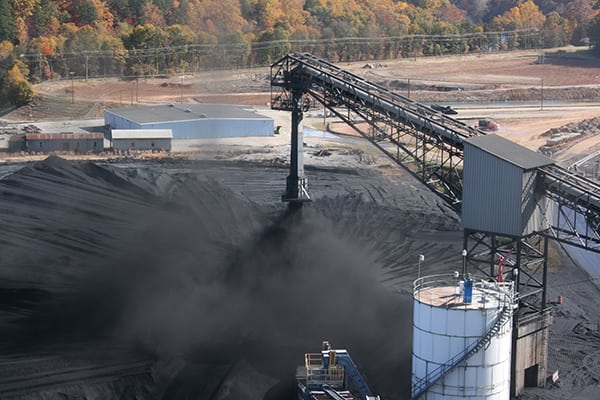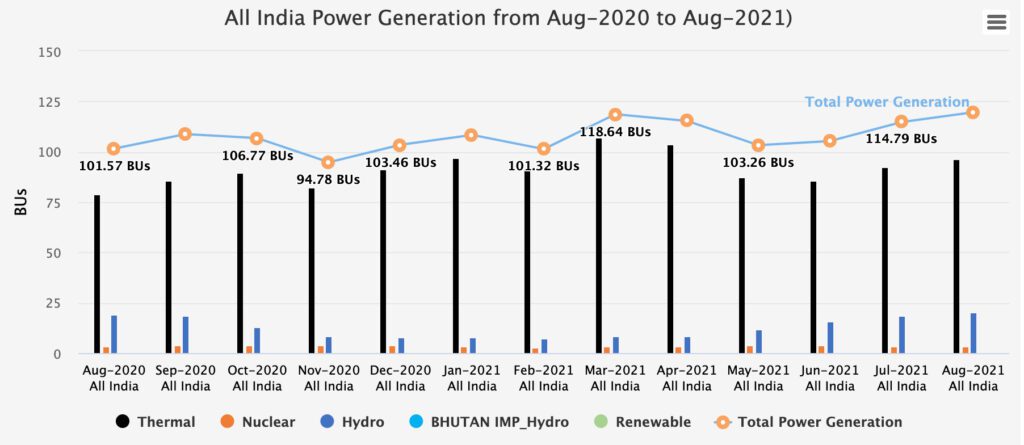India’s ‘Unprecedented’ Coal Shortages Paralyzing Power Generation

Stricken by a surge in global coal prices and freight costs, several Indian coal power plants are fielding a critical coal supply shortage that has forced some to curtail power. Fearing a power crisis, the Ministry of Power recently directed hydropower generators to defer scheduled maintenance through October. The Ministry of Coal, meanwhile, this week issued a wide-ranging reform agenda that will boost coal supplies but also prepare India's coal sector for a new role in a low-carbon future.
The country's New Delhi-based government power system planner, the Central Electricity Authority (CEA), in its Oct. 5 daily coal stocks report suggested 106 of 135 thermal generators with assigned coal linkages" are suffering critical" or supercritical" coal stock shortages. Supercritical shortages are total stocks of less than three days of coal, while critical shortages are stocks of less than five days. According to the CEA, while stock requirements vary regionally and by plant, they typically range from 15 days to 30 days, and average 21.2 days. As of Oct. 5, the all-India" actual stock average was four days.
According to the CEA's report, at least 17 plants-a total installed capacity of 19 GW-have zero days in stocks. Another 81 plants, a combined capacity of 102 GW, had less than five days in stock. The crisis is mainly affecting non-pithead power plants, which source coal via rail from mines that are more than 1,500 kilometers away. A total of 119 non-pithead plants-a combined 129 GW-had a total stock of about four days. However, 16 pithead plants, which are built near coal mines, are also grappling with only five days in total stock.
The CEA cites several reasons for the supply crunch. These range from linkage assignments that are flexible or don't align to plant capacity, plant regulation" of coal supplies, poor stock management, and limited supplies owing to outstanding dues."
But many plants also say they are fielding cutbacks from coal importers, which are reeling from an increase in global coal prices and freight costs. Asian coal price benchmarks have soared in recent months stemming from higher demand as countries open up their economies. Tightening coal supplies for generators in China-which is facing a similar power squeeze that in part stems from a trade standoff with Australia-has also ramped up competition for imported coal. As the world's second-largest coal importer (and also a leading producer and consumer), India mainly sources its imports from Indonesia, Australia, and South Africa.
Responding to the shortages, Coal India, a government-owned entity that supplies more than 80% of the country's domestic coal, says its production rose to 40.7 million tonnes (MT) over September. The rise, which was limited by the rainy season, is marginal compared to the 40.5 MT that Coal India produced in September last year. The entity reportedly has plans to ramp up production gradually to reach 1 billion tonnes of production by 2024.
Ministry of Coal Announces Wide-Ranging Coal Sector ReformsScrambling to stem the emerging crisis, India's Ministry of Coal on Oct. 4 announced it had finalized an agenda document" that will apply through 2022. The agenda envisions reforms that will meet the existing and the emerging challenges of the coal sector and align itself well with the emerging technologies and diversification thrust of the coal sector." While the agenda covers the entire coal sector, it will prioritize steering the coal sector into new technologies while focusing on the core competence and ensuring set production targets," including Coal India's ambitions to produce 1 billion tonnes by 2024.
The reforms at will apply to resource exploration, beneficiation, mine safety, marketing, coal pricing in coal mines, coking coal use, land acquisition, and exports. It also includes a strategy to boost coal production of mines allocated through auction," the ministry said. The agenda's forward-looking initiatives include exploring monetization" of former mine and power plant sites and the use of digital technologies, including artificial intelligence, data mining, and drones to more efficiently meet sustainability goals. Over the longer term (in what is described as a futuristic agenda"), the ministry will explore coal conversion technologies to produce syngas, hydrogen, liquid fuels, chemicals, and fertilizers. The ministry also said it expects that Coal India will diversify its business and explore prospects in sunrise [solar] industries, electric charging pods, EVs etc."
Power Ministry Asks Hydro Generators to Stay OnlineThe step is notable for India, which relies heavily on coal to power its economic growth. Despite recent ambitions to increase its carbon-free resources, the country's total installed power capacity was 52.6% coal-fired (and 1.7% lignite-fired) as of August 2021. About 6.5% was gas-fired. But while renewables and hydropower made up 37.9% of its total installed capacity of 287 GW, non-hydro renewables generated only a fraction of the country's total power last month. Thermal power generation accounted for nearly 80% of total production, followed by hydro at 17% and nuclear at 3%.
 Source: Central Electricity Authority
Source: Central Electricity Authority
Recognizing coal's significant role in ensuring reliability, and intent on avoiding a power crisis under the unprecedented" coal supply issues, the Ministry of Power in September directed more than 40 major hydro generators to defer scheduled maintenance of their hydropower plants through September and October 2021. It also asked an agricultural board to review its water reserves for irrigation purposes.
lt is estimated that a significant capacity of hydro power plants may have to reschedule their maintenance schedule," wrote R.P. Pradhan, a Ministry of Power director, in a Sept. 7 letter to the utilities. Pradhan also noted that the ministry was working to closely monitor the coal stock position and enable an emergency response if necessary. The government's reliability efforts are being led by a core management team," which includes representatives from the ministries of Power, Coal, Railways, the CEA, Coal India, and state-owned grid operator Power System Operational Corp. (POSOCO), he said.
-Sonal Patelis a POWER senior associate editor (@sonalcpatel,@POWERmagazine).
The post India's Unprecedented' Coal Shortages Paralyzing Power Generation appeared first on POWER Magazine.